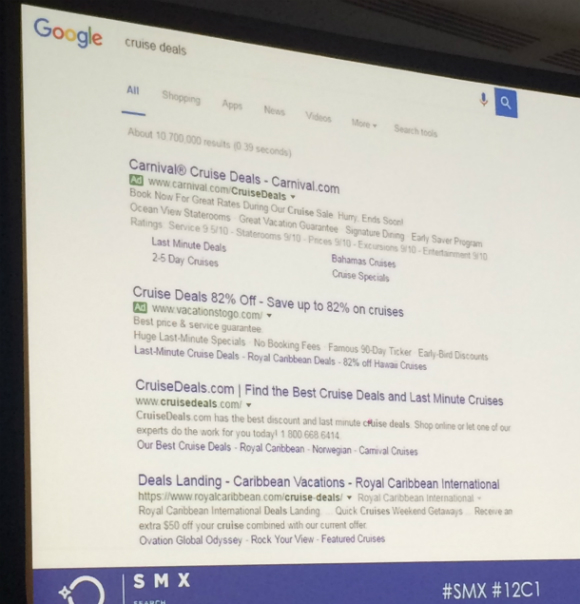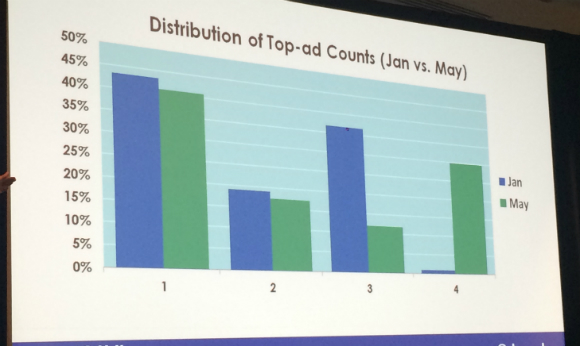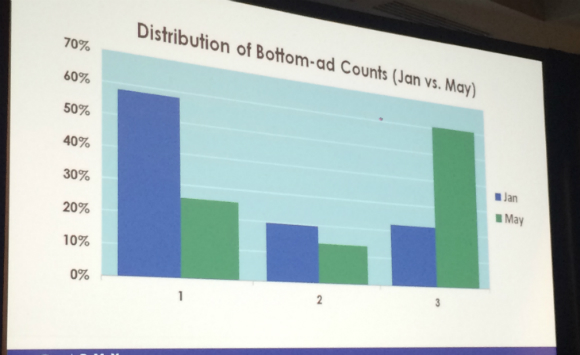Key Changes to the Google SERP: What You Need to Know Mid-2016 – #SMX was originally published on BruceClay.com, home of expert search engine optimization tips.
“If you don’t believe by now that we aren’t serving 10 blue links, I don’t know how to help you.”
Amen, Dr. Pete, amen! It’s 2016, and the days of 10 blue links are long gone. The SERP is rich, dynamic and ever-changing. Moz’s marketing scientist, Dr. Pete Meyers, takes the SMX Advanced 2016 stage to overview recent key changes to the search engine results pages that we need to keep in mind as we make SEO magic.
Today’s SERP: You Never Know What You’re Going to Get
There are some desktop queries for which the first organic result doesn’t show up until Page 2. In mobile, rich search is even more prolific.
Featured snippets are also becoming more prolific. Some SERPs feature organic search and paid ads before you get to organic result one.
More Space for Title Tags
Across the 90,000 URLs Meyers studied, the average character cutoff was 63 characters.
The shortest title tag Meyers found was 34 characters with a brand tag added by Google. On the opposite extreme, one title tag had 77 characters displayed. There’s a wide variance for what can fit in the title tag within the margins of a search result column. Our guideline right now is <60 characters. Don’t obsess about it, though. It’s 0kay if things get cut off.
Also, there’s more space on mobile for title tags, because entries are getting two lines rather than one.
Google recently tested black links instead of blue, as well as green ad boxes. The green ad boxes stuck around.

Green color on ad indicators in Google SERP
The black text, however, is not the new blue. Google tests thousands of things all the time — these are not things to worry about. Should Google change all the links to pink, Pete advises us to have a beer and take a nap. #NoBigDeal
Four Ads on Top
In February 2016, 40% of the SERPs had right-side ads — then it went to zero. The number of SERPs that had ads on the bottom of the page jumped from 10% to 40%.
The result? We’ve lost vertical space for organic listings:

Distribution of top-ad counts across pages 1 to 4 in Google SERPs

Bottom-ad counts distribution across Google pages 1 to 4
Getting rid of the right-hand column of ads was a mobile-first decision.
Want More From Dr. Pete?
Earlier this month, I interviewed Meyers about the changing Google SERP. Check out our video chat for more insights on SERP changes!

No comments:
Post a Comment